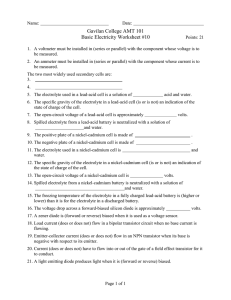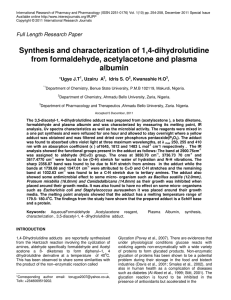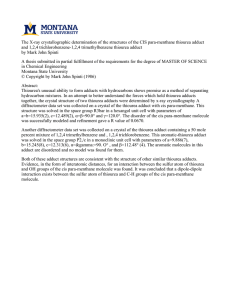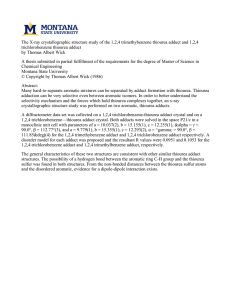Take Home Exam for MS‐TOF Training The answers provided to this test has to be handwritten/students...
advertisement
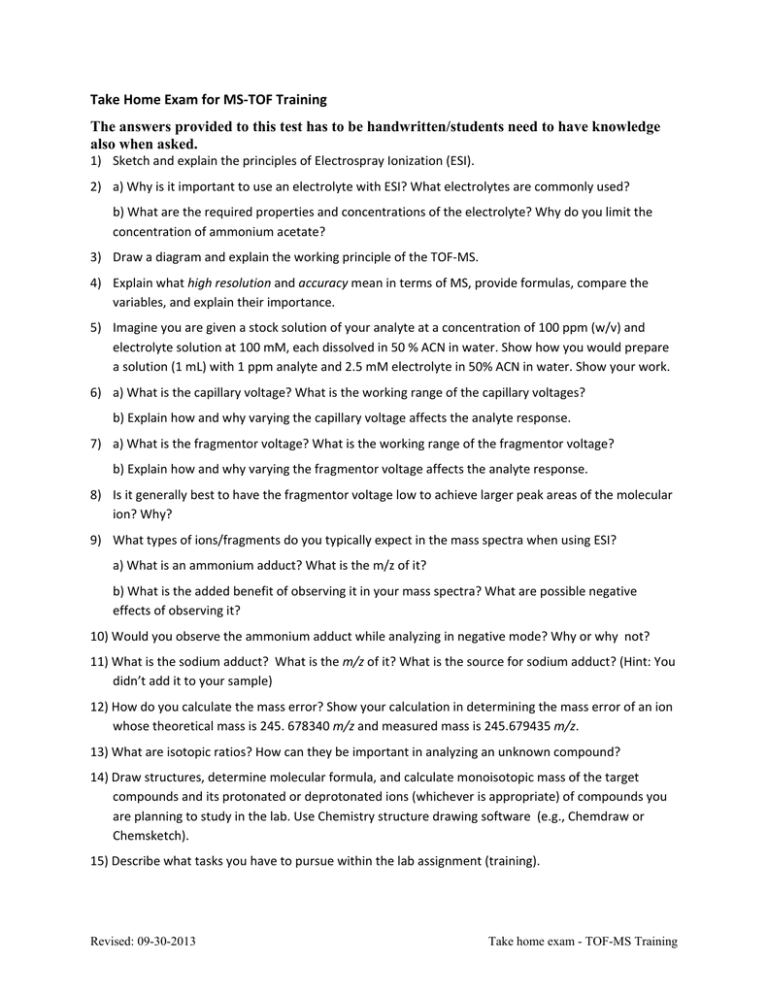
Take Home Exam for MS‐TOF Training The answers provided to this test has to be handwritten/students need to have knowledge also when asked. 1) Sketch and explain the principles of Electrospray Ionization (ESI). 2) a) Why is it important to use an electrolyte with ESI? What electrolytes are commonly used? b) What are the required properties and concentrations of the electrolyte? Why do you limit the concentration of ammonium acetate? 3) Draw a diagram and explain the working principle of the TOF‐MS. 4) Explain what high resolution and accuracy mean in terms of MS, provide formulas, compare the variables, and explain their importance. 5) Imagine you are given a stock solution of your analyte at a concentration of 100 ppm (w/v) and electrolyte solution at 100 mM, each dissolved in 50 % ACN in water. Show how you would prepare a solution (1 mL) with 1 ppm analyte and 2.5 mM electrolyte in 50% ACN in water. Show your work. 6) a) What is the capillary voltage? What is the working range of the capillary voltages? b) Explain how and why varying the capillary voltage affects the analyte response. 7) a) What is the fragmentor voltage? What is the working range of the fragmentor voltage? b) Explain how and why varying the fragmentor voltage affects the analyte response. 8) Is it generally best to have the fragmentor voltage low to achieve larger peak areas of the molecular ion? Why? 9) What types of ions/fragments do you typically expect in the mass spectra when using ESI? a) What is an ammonium adduct? What is the m/z of it? b) What is the added benefit of observing it in your mass spectra? What are possible negative effects of observing it? 10) Would you observe the ammonium adduct while analyzing in negative mode? Why or why not? 11) What is the sodium adduct? What is the m/z of it? What is the source for sodium adduct? (Hint: You didn’t add it to your sample) 12) How do you calculate the mass error? Show your calculation in determining the mass error of an ion whose theoretical mass is 245. 678340 m/z and measured mass is 245.679435 m/z. 13) What are isotopic ratios? How can they be important in analyzing an unknown compound? 14) Draw structures, determine molecular formula, and calculate monoisotopic mass of the target compounds and its protonated or deprotonated ions (whichever is appropriate) of compounds you are planning to study in the lab. Use Chemistry structure drawing software (e.g., Chemdraw or Chemsketch). 15) Describe what tasks you have to pursue within the lab assignment (training). Revised: 09-30-2013 Take home exam - TOF-MS Training




